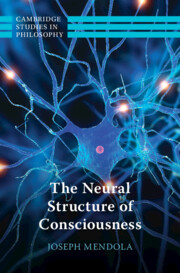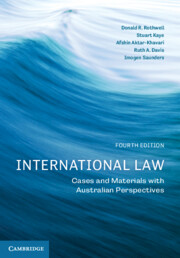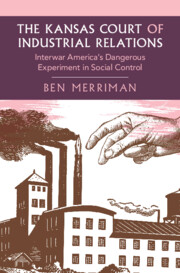Refine search
Actions for selected content:
3372606 results
Role of nonlinearities induced by deterministic forcing in the low-frequency dynamics of transitional shock wave/boundary layer interaction
-
- Journal:
- Journal of Fluid Mechanics / Volume 1016 / 10 August 2025
- Published online by Cambridge University Press:
- 28 July 2025, A6
-
- Article
-
- You have access
- Open access
- HTML
- Export citation
First-language and second-language eye movement reading behavior in monolingual and bilingual children and adults: A focus on word age of acquisition effects
-
- Journal:
- Bilingualism: Language and Cognition , First View
- Published online by Cambridge University Press:
- 28 July 2025, pp. 1-13
-
- Article
-
- You have access
- Open access
- HTML
- Export citation
Estimating the potential of ionizing radiation-induced radiolysis for microbial metabolism on terrestrial planets and satellites with rarefied atmospheres
-
- Journal:
- International Journal of Astrobiology / Volume 24 / 2025
- Published online by Cambridge University Press:
- 28 July 2025, e9
-
- Article
-
- You have access
- Open access
- HTML
- Export citation
David J.D. Miller and Peter Sarris, The Novels of Justinian: A Complete Annotated English Translation. (2 vols). Cambridge: Cambridge University Press, 2018. Pp. xix, 1192
-
- Journal:
- Byzantine and Modern Greek Studies , First View
- Published online by Cambridge University Press:
- 28 July 2025, pp. 1-3
-
- Article
- Export citation
Deep learning–based automated weed coverage estimation for herbicide efficacy assessment and turfgrass management
-
- Journal:
- Weed Science / Volume 73 / Issue 1 / 2025
- Published online by Cambridge University Press:
- 28 July 2025, e60
-
- Article
-
- You have access
- Open access
- HTML
- Export citation
Searching for quasi periodic oscillations in optical and gamma-ray emissions and black hole mass estimation of blazar ON 246
-
- Journal:
- Publications of the Astronomical Society of Australia / Volume 42 / 2025
- Published online by Cambridge University Press:
- 28 July 2025, e112
-
- Article
-
- You have access
- Open access
- HTML
- Export citation
Specific learning differences in learning, teaching, and assessing additional languages
-
- Journal:
- Language Teaching , First View
- Published online by Cambridge University Press:
- 28 July 2025, pp. 1-25
-
- Article
-
- You have access
- Open access
- HTML
- Export citation
FinTech: Finance, Technology and Regulation. By Ross P. Buckley Douglas W. Arner and Dirk A. Zetzsche . [Cambridge University Press, 2024. xx + 330 pp. Paperback £29.99. ISBN 978-1-00907-821-4.]
-
- Journal:
- The Cambridge Law Journal , First View
- Published online by Cambridge University Press:
- 28 July 2025, pp. 1-7
-
- Article
- Export citation
LYUAPONOV EXPONENTS FOR OPEN BILLIARD SYSTEMS
- Part of
-
- Journal:
- Bulletin of the Australian Mathematical Society , First View
- Published online by Cambridge University Press:
- 28 July 2025, pp. 1-2
-
- Article
-
- You have access
- HTML
- Export citation
The Red-Collars and the Socio-Emotional Roots of Reform Socialism in Czechoslovakia (1948–68)
-
- Journal:
- Central European History , First View
- Published online by Cambridge University Press:
- 28 July 2025, pp. 1-25
-
- Article
- Export citation
“Legislative Power” of the United Nations Security Council: A Step Too Far?
-
- Journal:
- Asian Journal of International Law , First View
- Published online by Cambridge University Press:
- 28 July 2025, pp. 1-24
-
- Article
-
- You have access
- HTML
- Export citation
The middle-income trap, state capacity, and institutional business power: understanding the failed upgrading of the lithium industry in Chile
-
- Journal:
- Business and Politics , First View
- Published online by Cambridge University Press:
- 28 July 2025, pp. 1-25
-
- Article
-
- You have access
- Open access
- HTML
- Export citation
Ethnic Nationalism and Attitudes Towards Refugees in the Czech Republic
-
- Journal:
- European Review , First View
- Published online by Cambridge University Press:
- 28 July 2025, pp. 1-17
-
- Article
-
- You have access
- Open access
- HTML
- Export citation
Military demonstrations as digital spectacles: How virtual presentations of AI decision-support systems shape perceptions of war and security
-
- Journal:
- European Journal of International Security , First View
- Published online by Cambridge University Press:
- 28 July 2025, pp. 1-20
-
- Article
-
- You have access
- Open access
- HTML
- Export citation
Mass transport induced by infragravity waves
-
- Journal:
- Journal of Fluid Mechanics / Volume 1016 / 10 August 2025
- Published online by Cambridge University Press:
- 28 July 2025, A5
-
- Article
-
- You have access
- Open access
- HTML
- Export citation
Recent advances and current state of knowledge of phylogenetics and systematics of the Diplostomoidea with a proposal of a new classification system and a key to genera
- Part of
-
- Journal:
- Journal of Helminthology / Volume 99 / 2025
- Published online by Cambridge University Press:
- 28 July 2025, e87
-
- Article
-
- You have access
- Open access
- HTML
- Export citation
Remembrance in Clay and Stone: Early Memorial and Funerary Art of Southwest China. By Hajni Elias. New York: Columbia University Press, 2025. 360 pp. $65.00 (cloth), $64.99 (eBook)
-
- Journal:
- Journal of Chinese History , First View
- Published online by Cambridge University Press:
- 28 July 2025, pp. 1-5
-
- Article
- Export citation

The Neural Structure of Consciousness
-
- Published online:
- 27 July 2025
- Print publication:
- 18 September 2025

International Law
- Cases and Materials with Australian Perspectives
-
- Published online:
- 26 July 2025
- Print publication:
- 31 July 2025
-
- Textbook
- Export citation

The Kansas Court of Industrial Relations
- Interwar America's Dangerous Experiment in Social Control
-
- Published online:
- 26 July 2025
- Print publication:
- 14 August 2025











